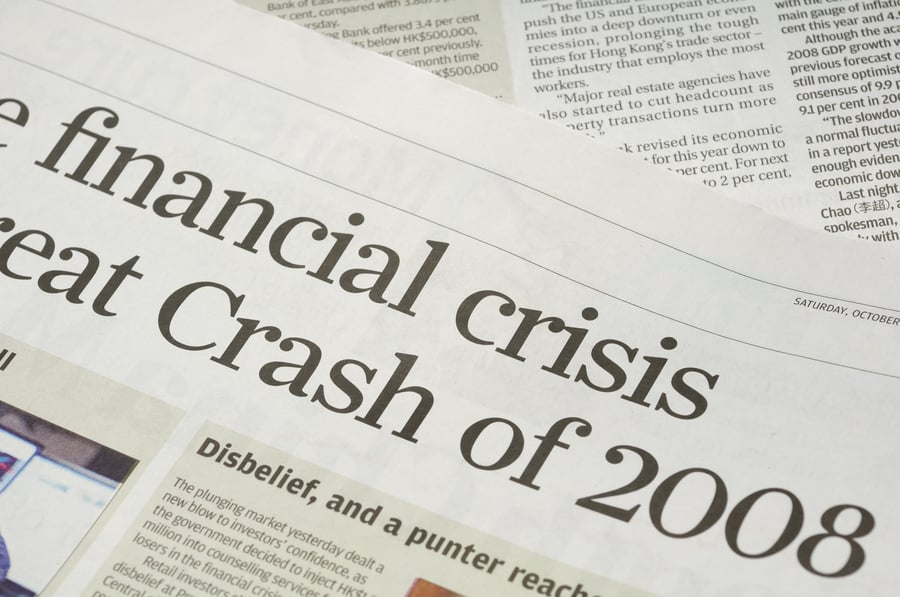Let’s begin with a story about bankruptcy…
The year is 1847. A young businessman has spent the last couple of years getting used to his new life in America. He arrived with a dream of creating something new for himself. His name is Henry Lehman and today is a good day because his brother Emanuel has arrived to give him a hand with his dry goods store.
With the help of his brother, Lehman knows that the business will grow. It’s time to change the name to H. Lehman and Bro. A few years later, Mayer, the third brother arrives and another change is necessary. Lehman Brothers has a nice ring to it.
Over the next two centuries, Lehman Brothers continues growing until it’s the fourth-biggest investment bank in the US.
And then it all came crashing down.
A combination of poor investing, lack of adaptability to market changes and transparency with stakeholders sent one of the world’s biggest financial institutions plummeting into bankruptcy as the Great Recession of 2008 spread like wildfire.

Don’t let history repeat itself
We’ve used this example of Lehman Brothers because it’s a story that happens too often during a recession. It’s a story that’s happening in the 2020s, with a struggling worldwide economy and businesses of all shapes and sizes facing financial challenges.
Recent examples of companies facing bankruptcy include Bed Bath & Beyond preparing to file for bankruptcy and most recently, defaulting on loans. Meanwhile, Party City is struggling too, filing for Chapter 11 bankruptcy.
These examples show a fuller picture of what’s happening on a country-wide level. In the latter half of 2022, US inflation leapt by 8.2% compared to the same time the year before. Meanwhile, big private-equity buyouts have dropped by 54%, causing global dealmaking to slow down.
And a WeForum survey of 525 investors and retailers made predictions on when another recession would hit the US. The results were interesting, with 48% expecting it would happen in 2023, while 21% predicted 2024 and 16% were a bit more optimistic expecting a recession in 2025 and beyond.
How can businesses combat bankruptcy in a recession? It’s not all doom and gloom. Even in a recession, there are plenty of ways to keep your business afloat and it starts with having a healthy cash flow.

Never underestimate the basics
Cash flow management should never be taken lightly. Without a healthy cash flow, you won’t be able to pay your employees, suppliers/vendors and even operating expenses. And if that happens, you’re going to find your company’s credit score sliding down – making your business look less professional, less reliable and less creditworthy. Unfortunately, maintaining a healthy cash flow can often be what breaks a business. In fact, 82% of businesses fail because of cash flow problems. This can come down to not having efficient or automated invoice processes in place or not being nimble enough to adjust your financial processes when unexpected circumstances arise.
That’s why it’s important to create monthly, quarterly and annual financial reporting of your expenses and sales. The kind of information to include in the forecasts are:
- Assets: Things you own and can control like raw materials and office supplies
- Liabilities: Anything your business owes like employees’ wages
- Revenue: The full amount of money earned from your products and services
- Net Income: The profit made after taking away expenses and overhead
- Expenses: The costs needed to run your business (i.e. renting office space, utilities, insurance)

Another fundamental you should be doing to keep your cash flow healthy is reviewing the business credit score of potential customers (before signing new contracts) and existing prospects. which provides all sorts of information about their financial health. Not only can you find out their business credit scores, credit limits, percent and total amount of money they owe (past due), their average days beyond terms (DBT), but you can also see the total number of legal filings and UCC filings against them and so much more.
So, imagine your sales team has been working to close a new business deal for the last six months and now they’ve brought that deal to your finance/credit control team. Your sales team is excited about the deal and see it as a major revenue driver. But then…your deal gets nixed by the finance team because it doesn’t meet your company’s credit policy. Your sales team certainly won’t be happy about that.
But it’s likely the best decision your company could have made because when your finance team ran a business credit check on the business, their business credit report showed all sorts of red flags, like being deemed a ‘very high risk’ and having a large amount of money (in the millions) past due. As our ‘Sales vs. Credit Control Battle’ research study found, over half (52%) of the US sales managers we surveyed said that they lose up to $200,000 a month because their deals didn’t meet the company’s credit policy. That’s a lot of lost revenue for businesses. But it’s even worse for smaller businesses who count on every single sale to stay afloat and grow long-term.
In a battle against bankruptcy, checking the business credit report of potential customers and existing customers can make all the difference. It’ll save you the headache of working with companies that don’t pay on time and have legal filings against them (draining them of millions of dollars). If you work with high risk businesses, then your own business will suffer – making it harder to keep your cash flowing and less likely that you’ll be approved for a business loan, if and when the time comes that you need one.
Automation for the win
Imagine your team has poured their heart and soul into delivering goods to a customer. It’s taken months of coordination to get the job done and spent a lot of money and resources to execute the customer’s project. Now, the only thing left to do is send the invoice to the customer and get paid.
Easy enough, right? Not necessarily. It’s not that rare for businesses to pay their invoices late. As our Q3 2022 Industry Payment Analysis Report reveals, the utilities, real estate, healthcare, hospitality, public administration and mining and oil industries all struggled with paying their bills on time with high days beyond terms (DBT) figures.
There are a couple of ways to address this issue. The first is to make sure your accounts receivable process is as smooth as possible. This means getting rid of manual invoicing systems that rely on sending PDF attachments through email. Instead, use an automated invoicing system that makes it effortless for customers to pay you on time with the click of a button.
Secondly, integrating your existing systems with new technology can be game-changing. For instance, if you’re using ledger management software, integrate it with a risk management database. What are the advantages of doing this? You’ll get a 360-degree view of how well and often your customers are paying their invoices. On top of that, you’ll be able to set up cash flow alerts and see gaps that need to be changed. Quicker decision-making means more efficiency and more proactive debt collection strategies if/when payments are late.
Adapt or perish
Remember the Lehman Brothers story? That was a great example of a company that came from humble beginnings and grew into a thriving organization even through some of the worst financial events in history.
When the company started engaging in subprime mortgage lending, the people in charge never planned for a scenario where they could have lost anything and carried on like everything was fine. By the time they realized the ship was sinking, it was too late.
Adapting and adjusting are essential when the economy becomes unstable like we’ve seen over the last few years with businesses being hit hard (and closing) due to the COVID-19 pandemic. One example of a company that adapted during the pandemic is Walmart. It changed its business model for Walmart+ to serve customers better and offer a cost-effective alternative to Amazon Prime.
Papa John’s also adapted during the early days of the pandemic by adopting a fortressing strategy. This involved building more stores in the same location to cut down product delivery time and take on more orders.
Struggling to think of ways to adapt? Try these steps.
- Do a thorough audit on the financial health and payment behaviors of your customers regularly. Don’t do just do this once before signing a contract. Do it often throughout the entire customer lifecycle. As we’ve seen, circumstances change, the economy can take a downturn and inflation can skyrocket. By doing regular audits, you can anticipate late payments and create new debt collection strategies like including late fees into contracts.
- Be more discerning with extending credit to customers and have initiatives in place to track information, such as average invoice value or the average DBT.
- Don’t accept physical checks from customers. Make sure to only accept bank/wire transfers. Also, be more flexible with how you take online payments (i.e. through gateways like Stripe or Apple Pay). This not only will make it easier for your customers, but it will also help you get paid faster.

There’s no one-size-fits-all approach to cash flow management
In a recession, there’s no one-size fits all approach for keeping cash flowing in your business. Industry trends, customer relationships, capital and many other factors will impact how you respond.
What is clear is there are universal truths that help with debt collection, slow payments and business risk in times of uncertainty.
- Data is at the heart of effective cash flow management. The faster you access it, the easier it is to plan for problems.
- Having simple, automated processes makes invoicing smoother.
- Aligning your finance team and tech stack provides better insight into where money is coming and going from.